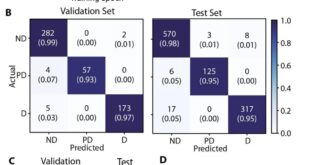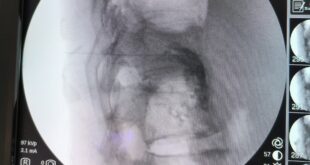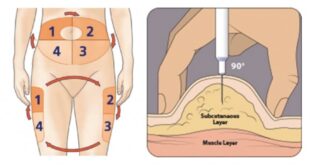Bàn chân đái tháo đường #2
Đây là chuyên đề sau đại học dành cho cho BSNT và học viên cao học. Các bạn SV quan tâm cũng có thể đọc vì có nhiều vấn đề rất hay.
Theo ý kiến của Thầy hướng dẫn thì có thể chia sẻ PDF nên mình chuyển từ PDF sang ảnh và upload lên đây cho các bạn dễ đọc.
Nói chung bệnh lý bàn chân có nhiều thể, PAD, DFUs, DF… bài này giúp chúng ta 1 phần hiểu thêm về đặc điểm, cách đánh giá và điều trị.
Sau khi đọc bài này xong, các bạn xem thêm phần tham luận tại: https://www.facebook.com/…/permalink/1172156943230262/








![Có thể là hình ảnh về văn bản cho biết '1. DỊCH TẾ HỌC .Khoảng 50% số người có BĐMCD không có triệu chứng, trong khi 33% không triệu chứng điển hình. BĐMCD ảnh hưởng đến hơn 200 triệu người trên toàn cầu. Theo khảo sát IDF 2019, tỷ lệ mắc BĐMCD tăng lên 29% ở những người trên 50 tuổi mắc Đái tháo đường [1] 1.IDFAtlasDiabetes2019 IDF Atlas 2019'](https://scontent.fsgn5-5.fna.fbcdn.net/v/t1.6435-9/192913141_3536417719917226_7739039826530627369_n.jpg?_nc_cat=100&ccb=1-5&_nc_sid=b9115d&_nc_ohc=JayRybd97rcAX9z7YSW&tn=wGsKowJx8VG0Zygr&_nc_ht=scontent.fsgn5-5.fna&oh=ecb5bbabf55828419202cd46a8a94c22&oe=61C714A1)

![Có thể là hình ảnh về văn bản cho biết 'Động mạch bình thường Động mạch xơ maub Thành mạch Giảm ưu lượng mâu 0 ·BĐMCD: Tắc nghẽn một phần hoặc toàn bộ của một hoặc nhiều động mạch chi dưá›i [1] Cơ chế bệnh sinh: nổi bật là Xơ Vữa Động Mạch (ĐTĐ type 2) Động mạch chocl chidu dưái- màu Màng xovừa Động mạch cất ngang Động mạch bị hẹp 1.Norman PE, Davis WA, Bruce DG, Davis TM (2006), Peripheral arterial disease and risk of cardiac death in type diabetes: the Fremantle Diabetes Study. Diabetes Care'](https://scontent.fsgn5-9.fna.fbcdn.net/v/t1.6435-9/192249971_3536417769917221_2968615239133135345_n.jpg?_nc_cat=105&ccb=1-5&_nc_sid=b9115d&_nc_ohc=gLKvSBkgkn8AX9JuE02&_nc_ht=scontent.fsgn5-9.fna&oh=81ec8a5d90e5f059ea59f50f33c157f6&oe=61C43C9D)









![Có thể là hình ảnh về văn bản cho biết 'Đái tháo đường và tiểu cầu .Tiểu cầu: chức năng mạch máu và huyết khối. .Trong tế bào nội mô, sự hấp thu glucose của tiểu cầu không được kiểm soát bởi tình trạng tăng đường huyết và dẫn đến tăng stress oxy hóa sự ngưng tập tiểu cầu gia tăng ở bệnh nhân mắc ĐTĐ. .Tiếu cầu ở bệnh nhân ĐTĐ cũng có biểu hiện tăng thụ thể glycoprotein Ib và Ilb/llla từ đó góp phần tăng huyết khối thông qua sự kết dính và kết tập của tiểu cầu [1]'](https://scontent.fsgn5-10.fna.fbcdn.net/v/t1.6435-9/193680555_3536417946583870_5744815628495995513_n.jpg?_nc_cat=110&ccb=1-5&_nc_sid=b9115d&_nc_ohc=a2QbyTyOW4sAX_W2QhL&_nc_ht=scontent.fsgn5-10.fna&oh=b6abd746f124ae12d209e607d293ee0d&oe=61C51FCE)







![Có thể là hình ảnh về văn bản cho biết '5. LÂM SÀNG .Theo khuyến cáo của ACC/AHA 2005, BĐMCD được chia làm bốn thể bệnh dựa vào đặc điểm lâm sàng [1] Thể lâm sàng Không triệu chứng TỷIệ Triệu chứng đau chi dưới không điển hình 20-50 Đi lặc cách há“i 40-50 Triệu chứng đe dọa chi dưới 10-35 1-2 Management of patients with peripheral artery disease (compilation of 2005 and 2011 ACCF/AHA Guideline Rcndations): report of the American College of Cardiology Foundation/American HeartAssociation Task on Practice Guidelines'](https://scontent.fsgn5-4.fna.fbcdn.net/v/t1.6435-9/195442826_3536418079917190_2131246925959673290_n.jpg?_nc_cat=102&ccb=1-5&_nc_sid=b9115d&_nc_ohc=WQa-XbJ2DIoAX-4x-Fw&_nc_ht=scontent.fsgn5-4.fna&oh=896c1a9e35ebc7fca8abbf677297373d&oe=61C5DF38)





























Link bài viết: https://www.facebook.com/groups/ylamsang/permalink/1175277342918222/
 Y khoa Ykhoa, y học, y tế, kiến thức, lâm sàng, cận lâm sàng, chẩn đoán, điều trị, phác đồ, diễn đàn y khoa, hệ sinh thái y khoa online, mới nhất và đáng tin cậy.
Y khoa Ykhoa, y học, y tế, kiến thức, lâm sàng, cận lâm sàng, chẩn đoán, điều trị, phác đồ, diễn đàn y khoa, hệ sinh thái y khoa online, mới nhất và đáng tin cậy.








